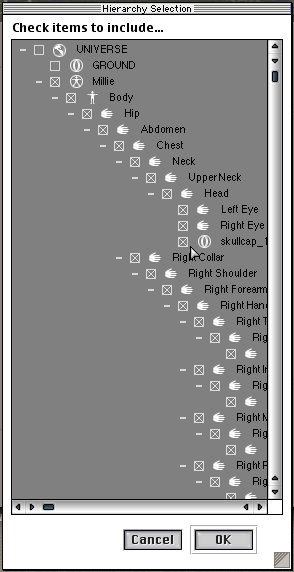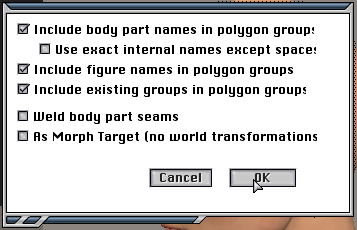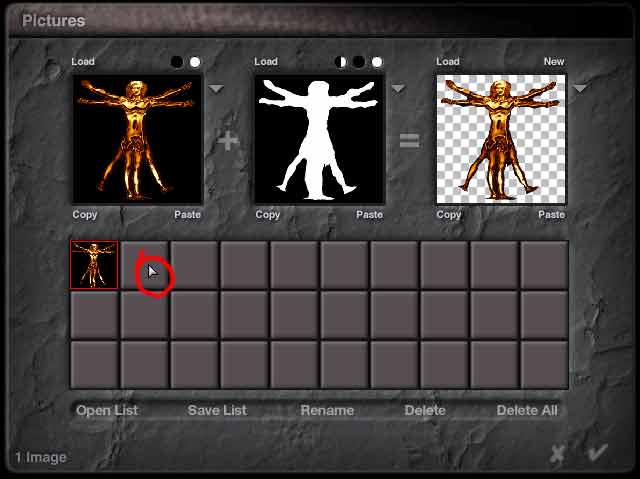 |
| First, arrange your figure in Poser exactly as you want it. (There's no changing the Pose once you get into Bryce.) Keep track of all the textures you use, and where they are on your drives. You will need that information later. |
 |
| If you have more than one figure in your scene (including conformable clothing) name the figures. Choose the figure, choose Body. Then go to the Object menu, and choose Properties. Type a name into the dialog box that appears, and click OK. |
 |
|
Also at this stage, make sure that all of the materials are the way you will want them in Bryce (not Poser.) Pay special attention to things like the Object color, Highlight Color, Ambient Color, Reflective Color and Highlight Size. (Don't worry about Transparency, it won't carry over anyway.) This is because it's much easier to select and change these attributes in Poser than it is in Bryce. Careful attention here will save you lots of time there. To change these attributes, go to the Render Menu, and choose Materials... Then click on the color squares to bring up the color chooser for your computer system. Choose a color, and click OK.
|






















